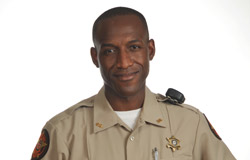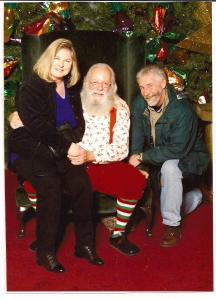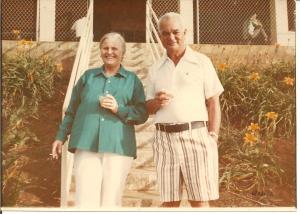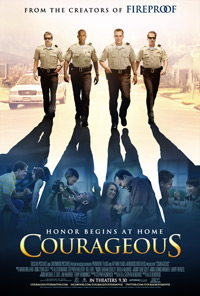[Update October 2015: United We Stand has a new phone number: 1-206-941-1932. The fledgling tent city recently obtained recognition from Washington state as a non-profit organization.]
A tour in late April of two remarkable tent cities in Shoreline, Washington…as well as conversations with some of the people who reside in them. But first: Who are the people who provide dinners every Tuesday night to Tent City 3 and United We Stand?
♥ Scroll down to the purple headline if you’d prefer to start with the author’s first-hand accounts of her tour of the camps.
Puyet was deftly cutting tangerines in half through the middle and placing them in an attractive glass bowl. The cut sides were facing upwards and looked like giant glistening, sectioned jewels. Paul, a seasoned world traveler who had just returned from Venice, was standing on her left and was rapidly peeling more tangerines to keep up with Vietnam-born Puyet.
Massive pots containing sauces, soup, and rice were simmering on the stainless steel commercial stove in St. Dunstan’s Episcopal Church’s well-equipped kitchen in Shoreline. Marlin, acting as if his life depended on it, was busily cutting loaves of garlic bread into hefty hunks in preparation for toasting them in the oven. Working away from the fray was a tall, aristocratic-looking man with sculpted white hair who was wearing a long, industrial-strength black plastic apron. He was focused like a laser beam on the dirty kitchen ware.
“This last half hour is when I begin to stress out a little,” Josef Hinkofer, the head chef, who was apprenticed as a cook at the age of fourteen in Germany, was smiling through his black, bushy moustache as he talked to me over his shoulder. Dressed in summer slacks and a button-down shirt, he was stirring the coconut milk and chicken sauce. He had added sliced Portobello mushrooms after sauteing them in a little butter. Quickly checking the food in the other pots, he handed me a stack of beige-colored ceramic soup bowls to place on the serving tables in the dining room and moved at warp speed in that direction.
The sweeping, well-planned lobby of the church doubles as the dining room; immense windows on the south side overlook the “tended informal gardens.” Serving tables were already displaying enormous stainless steel pans stuffed with lettuce that had been topped with thick slices of succulent, ruby-red tomatoes. Similarly sized rectangle pans of steaming hot apple cobbler would soon appear.
Everyone was working against the clock to meet a 5:30 p.m. deadline for a dynamic two-fold outreach to the community. The volunteers – anywhere from four to twelve show up – arrive at 3:00 p.m. to set up tables and chairs and assist Josef in the kitchen. (Not all of them are parishioners from St. Dunstan’s Episcopal Church.)
Josef, who immigrated to the U.S. in 1975 and is currently employed as a meat cutter at a Safeway grocery store in Seattle, had been pounding the pavement since 9:30 a.m. He gleans “distressed produce” and day old bakery goods on Tuesdays from two participating Safeway stores, and, while on the run, formulates a balanced and nutritious dinner menu in his head according to the foodstuffs available that week. By 2:00 p.m., he begins prepping and cooking in the church’s kitchen. Generous donations by members of St. Dunstan’s enable him to purchase meat and other provisions.
Every Tuesday evening, since August 2014, approximately 100 people from various economic backgrounds converge on the quaint church in Shoreline for a “Free Community Dinner.” Situated next to four heavily-trafficked lanes on 145th Street, the building is nonetheless invitingly nestled in an almost six-acre wooded tract that contains cherry, pine, and cedar trees, as well as salal bushes – an indigenous shrub that produces dark, juicy berries much prized by Native Americans.
Reverend David Marshall, who’s served as a rector at St. Dunstan’s Episcopal Church since 2009, regularly attends the weekly community outreach and partakes of the substantial dinner. Tall, lanky, and exuding a natural warmth, he’s very recognizable in traditional black clerical clothing and an eggshell-white full collar. He converses easily with the diners who sit near him.
The free dinner is just the tip of a very controversial iceberg. On Tuesdays, Josef Hinkofer and his volunteers also prepare enough food for two remarkably well-structured and well-maintained tent cities that could become successful – if not astonishing – prototypes for homeless people in other cities and possibly in other states.
Tent City 3 (TC3) and United We Stand (UWS: a “rebel” offshoot of TC3) are currently located in the city of Shoreline. TC3 was established in 2000. (St. Dunstan’s has had an outreach to the camp for more than three years.) TC3 has a self-imposed maximum occupancy of 100 people; UWS allows 35. They are presently encamped on land owned by two different churches that gladly share their power and water. (Tent City 4 is currently encamped in Issaquah and is not covered in this article.)
Normally, churches contract to host the tent cities; however, Seattle Pacific University, Seattle University, and Temple Beth Am have also allowed TC3 to encamp on their land. Per agreement between local governments, communities, and churches, the tent cities must relocate every ninety days. Extensions sometimes occur.
Both TC3 and UWS are self-governing and democratic. Their camps are clean, secure, and humane, thanks to a very cogent and viable Code of Conduct that all residents must honor or face expulsion: No littering, drugs, alcohol, weapons, violence, physical or verbal abuse, sexual harassment, etc. Open fires and smoking in the tents is not allowed.
Potential residents who apply to live in one of these two tent cities must provide valid picture I.D. which is checked by the local police department. People with outstanding warrants or who are registered as sex offenders are turned away.
An elected Executive Committee ensures that rules and policies are implemented and performs intake on potential new residents. Security Staff – a rotating three-hour shift that’s required of all residents – also protects the camp 24-hours per day from rule-breakers and, in addition, performs litter control, perimeter checks, and inspects the portable toilets. Loitering and disturbing the neighbors in and around the camps is not tolerated; in fact, as a community service, Security Staff patrol the neighborhood within the two-block radius around them. (See police and community feedback after this article.)
A Kitchen Coordinator oversees donated food items, keeps an inventory, and helps “disseminate” large quantities of food. A Donations Coordinator oversees all non-food donations and helps distribute them to the residents of the camp. The Move Coordinator (called a “Move Master” by TC3) facilitates all matters relating to the relocation of the camp. There is also a Bookkeeper. (TC3 also has a Tent Master and a Bike Master. )
Charitable non-profit organizations such as SHARE/WHEEL (which advocates for TC3 but not for UWS), and Greater Seattle Cares (which has an outreach to both TC3 and UWS) receive funding from grants, philanthropic organizations, and private donors to provide essential items such as portable toilets, dumpsters, blankets, and bus tickets (for job interviews, doctor’s appointments, etc.). This includes material support for items such as propane and plywood (sleeping bags are laid on plywood that is positioned on wood pallets, for example). (Josef is on the board of Greater Seattle Cares.)
C.E. Chambers’ Tours of Tent City 3 and United We Stand
It was raining on that Tuesday night in late April 2015 as I rode with Josef in his 2003 Chevy Silverado to deliver dinner to the residents of Tent City 3 in Shoreline. TC3 is currently hosted by the Shoreline Free Methodist Church. (Update: TC3 relocated to property owned by St. Dunstan’s Church on June 13, 2015. Read community and police feedback about their 2014 encampment at that site after the article.)
A long driveway leads to the back of the church and a large paved parking lot; the encampment, beyond the curb, is almost hidden from view: forest-green security tarps have been installed along the perimeters and only the carnival-colored peaks from the tallest tents are visible behind them: blue, brown, beige, purple, and green.
At the entrance, Security Staff resolutely sit inside a stark, three-sided black tent regardless of the weather. A dark-haired woman sitting behind a desk was simultaneously eyeing us and assisting three men, all standing, who looked as if they were eagerly waiting to receive information. An empty coffee pot sat desolately next to the desk as a curtain of light rain fell outside the open end of the tent.
Josef keeps a tight schedule and four or five men from different ethnic backgrounds and age groups were waiting joyfully as he arrived in his truck. Women eagerly joined them amid the drip, drip, drip of cold rain, and they helped unload the sacks and various containers containing food. Most of them were wearing hoodies.
“This might be the only hot meal they will eat today,” Josef had shared earlier with me.
The occupancy rate that night was 105. As stated, TC3 allows a maximum of 100 residents. However, as Josef shared, “If someone tumbles off a bus in Seattle and has no place to go, they won’t be turned away.” New arrivals (who are sometimes referred to as the “overflow”) must be “clean and sober”; they normally stay one night. A member of the Executive Committee acquaints them with other organizations that provide shelter for the homeless.
Newcomers, for obvious and excellent reasons, are scrutinized closely when entering the sanctuary of a tent city. However, Josef has been a faithful friend and advocate of the homeless for many years and I was accepted without question along with him. Following the dirt path that turned right after the Security Tent, he pointed out the communal Pantry Tent, the Kitchen Tent, and the TV tent. On the left were the Office Tent (opposite the Security Tent), the Blanket Tent, and the Computer Tent.
I walked carefully on sheets of plywood that had been placed over the by-now muddy ground. Josef, who had been cooking and delivering food to TC3’s various encampments for almost seven years, sprinted ahead of me.
There is no wasted space – or litter – in TC3. The tents, large and small, are grouped strategically in tight rows. The well-maintained spic-and-span camp exudes an almost immediate impression of compact tidiness. Nothing seemed out-of-order in the utility tents or around the living quarters. The metaphor “clean as a whistle” is an appropriate, non-exaggerated description of the camp.
As one resident shared later: “Just because we live outside, it doesn’t mean we have to be dirty.”
Standing on a large scrap of plywood, I counted the number of Honey Buckets – which are serviced every week – that were grouped together near the tents used for living quarters: There were five; one is designed for the handicapped. I pulled the hood of my plum-colored sweatshirt, splotched with the increasing rain, down over my head even more. Standing just a few feet away were more than a dozen somber residents who had queued patiently outside the tent where Josef’s provisions were being served. They were shivering slightly under the gloomy, inhospitable skies.
J.V., working his shift as a member of the Security Staff, passed by wearing the requisite fluorescent-yellow jacket. Slightly built, mustachioed, and missing a tooth in a conspicuous spot, he readily and articulately answered my questions. He pointed out the four large tents that were grouped together on the left. Two of the “dorm tents” are living quarters for single males; one dorm tent is for females; and the “mash tent” is divided into three sections and can accommodate three couples.
Across the very narrow dirt walkway in front of the dorm tents – one could probably leap across it – are thirty-five single occupancy tents (8’x8′); twenty-two tents for couples (in three different sizes); and one family tent (10’x16′). They’re squeezed side-by-side in neat rows.
Josef and I then drove to the United We Stand tent city. Currently hosted by the Richmond Beach Congregational Church, there were 25 people in residence that night. (Update: UWS relocated to Bethel Lutheran Church on August 1, 2015.) A dirt driveway on a gentle rise leads to the three-sided black Security Tent that sits front and center: Staff can easily monitor all vehicles entering or leaving from that direction as well as foot traffic. To the left, erected on a sloping, tree-filled expanse of land, are tents that can accommodate 35 homeless people; they look like large, murky shadows behind a high, green mesh security screen.
To the right of the Security Tent are the utility tents that are also hidden behind a high mesh screen. Josef and I headed to the pristine utility tents at a fast trot while carrying covered white plastic tubs of hot rice, the coconut milk and chicken sauce, and another aromatic concoction. “This is the spicy sauce,” Josef smilingly pointed out to a Donations Coordinator. There were few residents visible.
A tall, stocky, young man named Jonathan eagerly followed me back to Josef’s truck to retrieve more provisions: A large sack full of juice, milk, and compostable plates. Jonathan explained that he was a transplant from New Mexico. Later, as Josef and I were leaving, he expressed, with wrinkled brow and visible consternation, his concern regarding the availability of bus tickets: A large monthly donation from a particular donor was scheduled to end. Jonathan has a temp job working in construction in another city.
United We Stand was formed when approximately 25 residents broke away from Tent City 3 in late October 2014. TC3 was camped at that time at Haller Lake United Methodist Church in Seattle which had offered to host them for a few weeks beyond the normal 90-day contract. TC3 declined the offer – there are differing explanations for this depending on who you talk to – and decided to relocate instead to vacant land under a freeway overpass in the Ravenna area of Seattle without the customary permit. However, some residents, especially those who had found employment, felt substantial “angst” regarding possible sanitary issues (there was no hook-up for the portable shower that volunteers from Greater Seattle Cares had built) and wanted to remain at Haller Lake.
All residents are allowed a voice and a vote, and a very contentious debate ensued. About one-fourth of the residents were upset enough to form United We Stand and the fledgling tent city camped, by turns, at two different parks in Seattle for a few weeks until receiving permission to encamp at Haller Lake United Methodist Church.
King County’s largest shelter network, SHELTER/WHEEL, continues to advocate for TC3. However, it does not provide support, financially or materially, to United We Stand.
A few days after touring the two camps with Josef, I returned to the UWS encampment. It was a balmy, sunny day and the still waters of the Puget Sound were shimmering one-half mile away. Dennis, one of the residents I’d met before, had received the dog he’d been hoping to adopt from a “friend of a friend”: a Pit Bull Terrier Burmese Mountain Sheepdog mix. Dalya was laying comfortably in an attractive pink carrier that had been attached to an adult mobility walker.
Dennis, light-haired and blue-eyed with a buzz cut – and invariably polite, calling me “ma’am” – has been a resident of United We Stand since December 2014 and is a member of the Executive Committee. He helps enforce the rules and performs intake on potential new residents. Dennis, who’s in his 40s, had been homeless years before, and was working as a bill collector in 2000 when his wife, Penny, became bedridden. He gave up his job to serve as her unpaid, full-time caretaker. She passed away in 2011 and he was subsequently diagnosed with “social anxiety and severe depression.” Unemployed, he lived off his life savings until August 2014 when he couldn’t afford to pay the rent on his apartment any longer.
He “bounced around” the Lake City area of Seattle and lived in doorways. He visited food banks but preferred to sleep on the streets rather than in established community shelters. A few months ago he began to receive “less than $200 a month” from DSHS’s Aging, Blind and Disabled program which enables him to pay for public showers, a storage locker ($60/mos.), as well as provide for his new puppy. (Dalya receives free veterinary service through a program hosted by the Union Gospel Mission.) Dennis receives approximately $194 per month in food stamps. He hopes to qualify soon for Federal Supplemental Security Income and his name is on three housing lists. (Read an update about Dennis and other residents after this article.)
Currently, nine men and two female residents of UWS have obtained jobs from temporary employment agencies or from compassionate neighbors in Shoreline. A family with two children were recent, short-term residents until members of a Mormon church arranged for them to live in a hotel.
I’d been wondering how the residents of the tent cities survive the Pacific West’s cold, damp climate in the winter. A few days before, I’d spent less than an hour touring TC3 and UWS during a moderate but cold rain shower and my feet had felt like they were encased in ice when I arrived home. Dennis shared that some churches, including their current host, add a provision to the 90-day encampment contract that ensures access to the inside of the church building when the weather is “freezing” (in his words), in addition to customary access during services.
My husband had waited in the car for me while I made the short visit to UWS. Under the warm sun, it looked – and even felt – like a different camp. A man was constructing a platform next to the Security Tent with plywood and two-by-fours. A woman with a young girl, who’d parked her car in the church’s concrete parking lot on the south side, was visiting a friend who’s a resident at the camp. A few of the residents were milling about and chomping contentedly on large taco salads.
As we left, a red SUV that had been waiting on the street pulled into the dirt driveway; the driver pulled out trays of food from the back. It was a good day…tomorrow is a question mark.
Tours of the tent cities are available; please ask for a member of the Executive Committee. Tent City 3 (1-206-399-0412). United We Stand (a new phone number since Sept. 2015: 1-206-941-1932).
Feedback: Tent City 3 had very successfully encamped at St. Dunstan’s Church in 2014 (and returned June 2015). Read an excerpt about the 2014 encampment (including police and community input) written by Reverend David Marshall from St. Dunstan’s Episcopal Church’s Weekly Highlights (available via email), June 11, 2015: “Celebrating Our Ministries: Hosting Tent City 3”:
“Last year, a few weeks after Tent City 3 moved off of our property, one of our closest neighbors came by the church to speak with me. He said, ‘I was nervous about having them here, but I have to say they were great. I would support you having them back any time. About a month after that we got a call from the Shoreline police asking when we would host TC3 again. It turns out that there is less crime, and so less need for patrols, on the Interurban Trail when Tent City is hosted at St. Dunstan’s Church….”
UPDATE August 1, 2015: I happened to visit United We Stand while the residents were in the process of relocating from Richmond Beach Congregational Church to Bethel Lutheran Church (also in Shoreline). They had arrived at the latter church about 1:00 p.m. after tearing down their camp. Bill Bear, a board member of Greater Seattle Cares — who, like Josef Hinkofer, had contributed invaluable input while I was writing “Tent City Jewels” — had hired a U-Haul and made trips between the two churches.
I arrived in the early evening and most of the heavy, bulky wooden pallets (to lay sleeping bags on) were in place and the residents were earnestly erecting tents. It’s not an easy task, and people in the community (including six or seven members from Operation Nightwatch) and from at least one church had volunteered to help. Temps had been in the 90s; it was still sizzling about 6:45 p.m. when I showed up.
Dennis shared that his puppy, Dalya, was in the care of friends who live in an apartment. About two weeks ago, he began selling the award-winning street publication called Real Change in downtown Seattle and takes two buses to a street where there’s a shady spot. I also spoke to Jonathan, who was in good spirits, although looking for work. He’s a member of the Executive Committee now. I finally met Mike, formerly on the Executive Committee, who’s 58-years-old; we had spoken numerous times by phone. He’s been homeless since July 2014 after living with and caring for an elderly relative for many years.
© C.E. Chambers 2015 (a pseudonym used by Diana Einarsen since 1999)
From the SHARE/WHEEL and Greater Seattle Cares websites (unless enclosed in brackets):
SHARE/WHEEL: “SHARE, founded in 1990, is Seattle Housing and Resource Effort (co-ed). WHEEL, founded in 1993, is the Women’s Housing, Equality and Enhancement League (women-only). We are partners of homeless and formerly homeless men and women. All of our efforts are self-managed; run by the homeless members themselves. We are King County’s largest shelter network, with 15 indoor shelters and 2 Tent Cities [i.e., Tent City 3 and Tent City 4]. In addition to shelters and Tent Cities, we facilitate a Storage Locker Program and a Housing-For-Work Program called SHARE2. We are not a social service organization; we are a self-help group.”
Greater Seattle Cares: “Greater Seattle Cares was established in 2005 to provide a vehicle for local communities to connect with Tent City 3 for the provision of the residents’ daily needs and to facilitate their transition to independent living. [GSC has had an outreach to United We Stand since its founding in late 2014.] To achieve this mission, we strive to:
Build a network of caring individuals and community partners committed to enhancing the quality of life of the residents.
Coordinate efforts to deliver meals, clothing and supplies to the residents.
Communicate needs and advocate for Tent City 3 at community meetings and potential host sites.
Collaborate with local organizations to develop opportunities for the residents to further their own development and self-sufficiency…”











